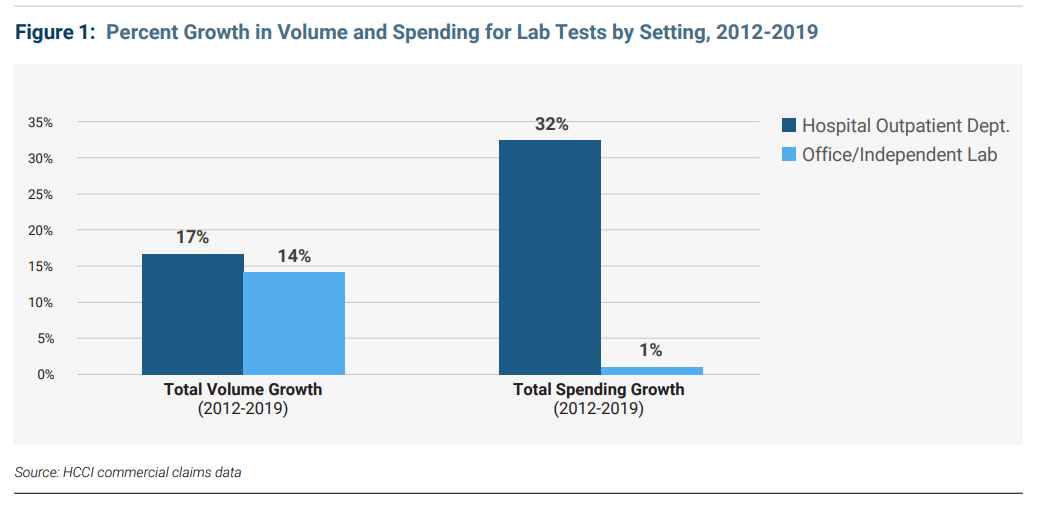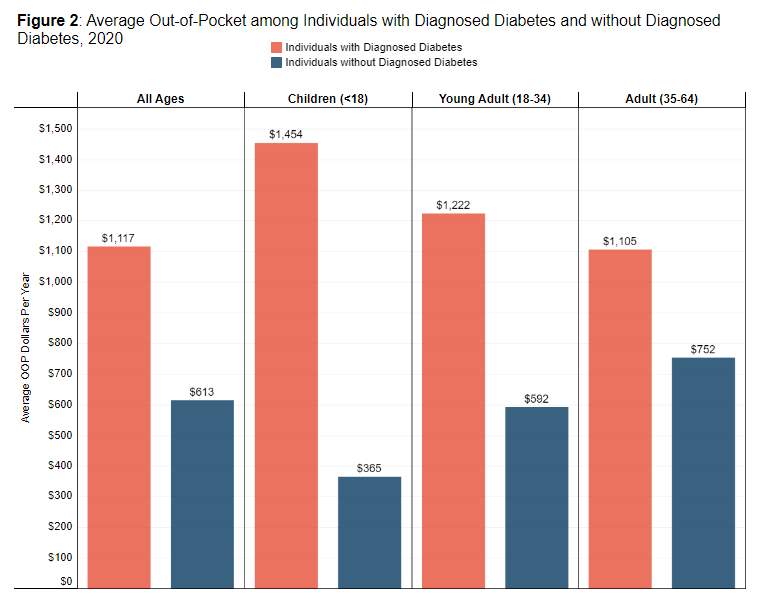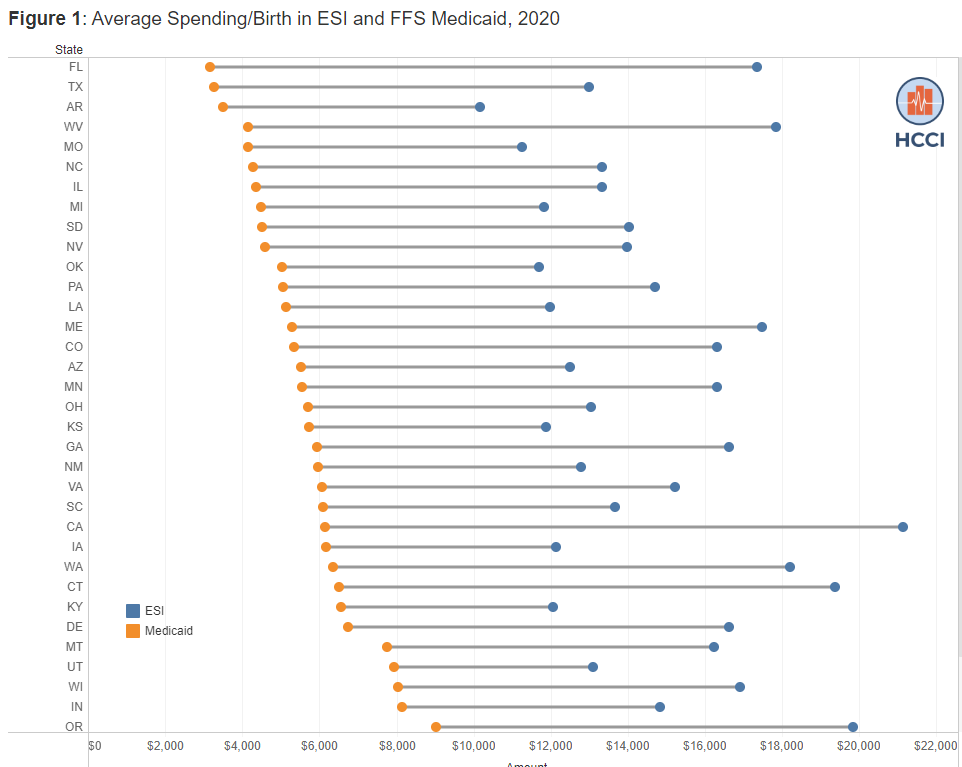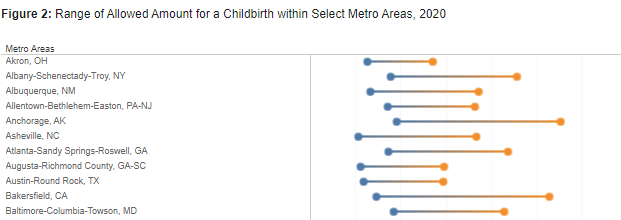Publications
-
HCCUR Data Point: Use and Spending on Clinician Services in Hospital and Non-Hospital Settings
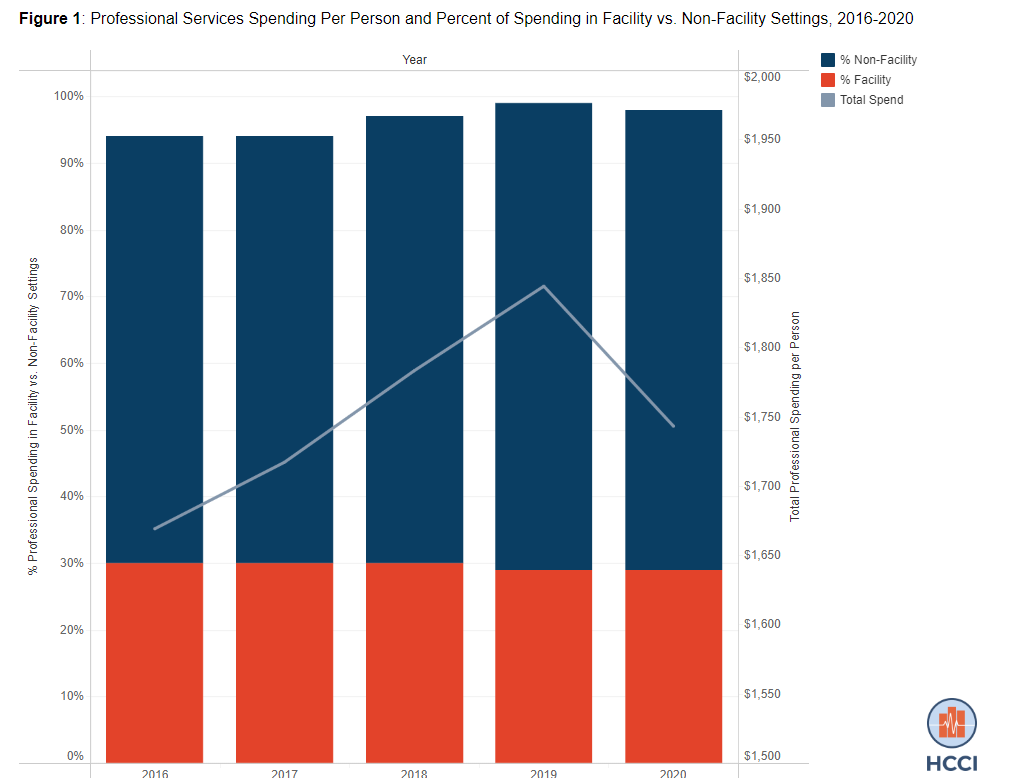 Read more: HCCUR Data Point: Use and Spending on Clinician Services in Hospital and Non-Hospital Settings
Read more: HCCUR Data Point: Use and Spending on Clinician Services in Hospital and Non-Hospital SettingsIn HCCI’s Health Care Cost and Utilization Report (HCCUR), we report per person spending on health care services of $5,607 in 2020. Of this spending, $1,514 (27%) was on services that occurred in a hospital outpatient setting and $1,071 (19%) was on services that occurred in a hospital inpatient setting. These spending amounts do not…
-
Price Markups for Clinical Labs: Employer‑based Insurance Pays Hospital Outpatient Departments 3X More Than Physician Offices and Independent Labs for Identical Tests
Read more: Price Markups for Clinical Labs: Employer‑based Insurance Pays Hospital Outpatient Departments 3X More Than Physician Offices and Independent Labs for Identical TestsThe Health Care Cost Institute (HCCI) in collaboration with West Health conducted an analysis of the high prices that employer-based insurance pays hospital outpatient departments for clinical lab tests. We found that insurers are paying 3 times more for identical tests (such as simple blood and urine tests) when billed by hospital outpatient departments compared to…
-
International comparisons of health care prices from the 2019 iFHP study
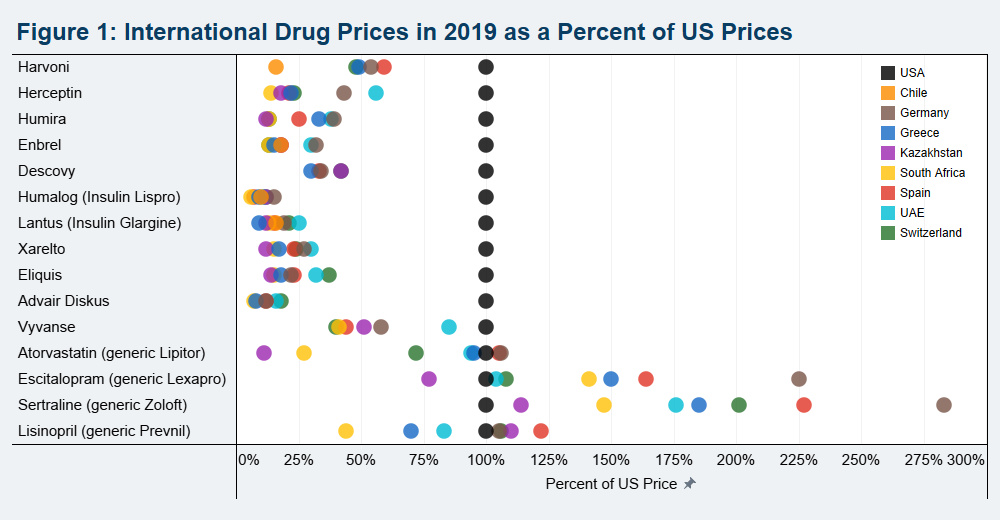 Read more: International comparisons of health care prices from the 2019 iFHP study
Read more: International comparisons of health care prices from the 2019 iFHP studyThe International Federation of Health Plans (iFHP), an executive network of the global health insurance industry based in London, in partnership with the Health Care Cost Institute (HCCI) in the United States, and iFHP member companies in multiple countries, today published the latest International Health Cost Comparison Report. The report compares the median prices paid…
-
Privately Insured Individuals with Diabetes Spend Twice as Much Out-of-Pocket on Health Care as those without Diabetes
Read more: Privately Insured Individuals with Diabetes Spend Twice as Much Out-of-Pocket on Health Care as those without DiabetesOver 10% of the U.S. population— more than 34 million individuals— lives with diabetes, with 1.5 million new cases diagnosed each year. As people with diabetes manage this chronic condition, they often pay substantial amounts out of their own pockets on medical care and prescription medications. Using HCCI’s unique health care claims dataset, this brief…
-
ARM and ASHEcon 2022 Recap: HCCI Staff Research
 Read more: ARM and ASHEcon 2022 Recap: HCCI Staff Research
Read more: ARM and ASHEcon 2022 Recap: HCCI Staff ResearchWe’ll admit it: we have missed in-person conferences! In June, HCCI staff attended AcademyHealth’s Annual Research Meeting (ARM) and ASHEcon. In addition to connecting with other health services researchers, staff presented original research using HCCI’s commercial claims dataset. Here’s a sampling of HCCI staff presentations: ASHEcon: Real World Consequences of the Qualifying Payment Amount in the No Surprises Act Presentation…
-
The First Year of the COVID-19 Pandemic Had a Disproportionate Impact on Inpatient Service Use in Socially Vulnerable Metro Areas
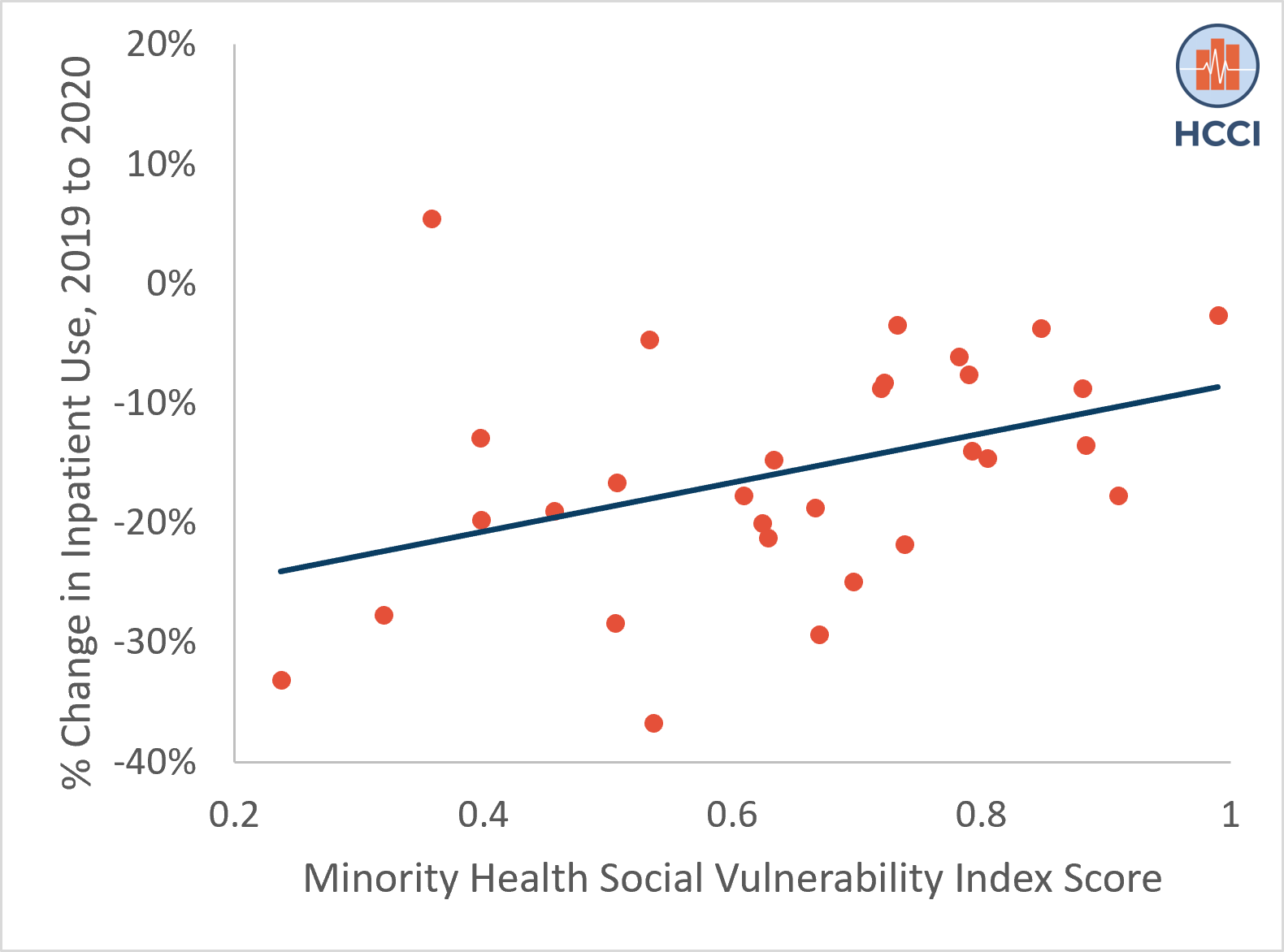 Read more: The First Year of the COVID-19 Pandemic Had a Disproportionate Impact on Inpatient Service Use in Socially Vulnerable Metro Areas
Read more: The First Year of the COVID-19 Pandemic Had a Disproportionate Impact on Inpatient Service Use in Socially Vulnerable Metro AreasEach year, HCCI publishes an annual update to the Healthy Marketplace Index (HMI), an interactive tool that describes how health care prices, use, and spending vary across metropolitan areas. HMI helps us to understand how these aspects of the health care system compare and contrast to the median metropolitan area. We recently released the latest…
-
One-Third of Births Occurred by C-Section in ESI and Medicaid in 2020
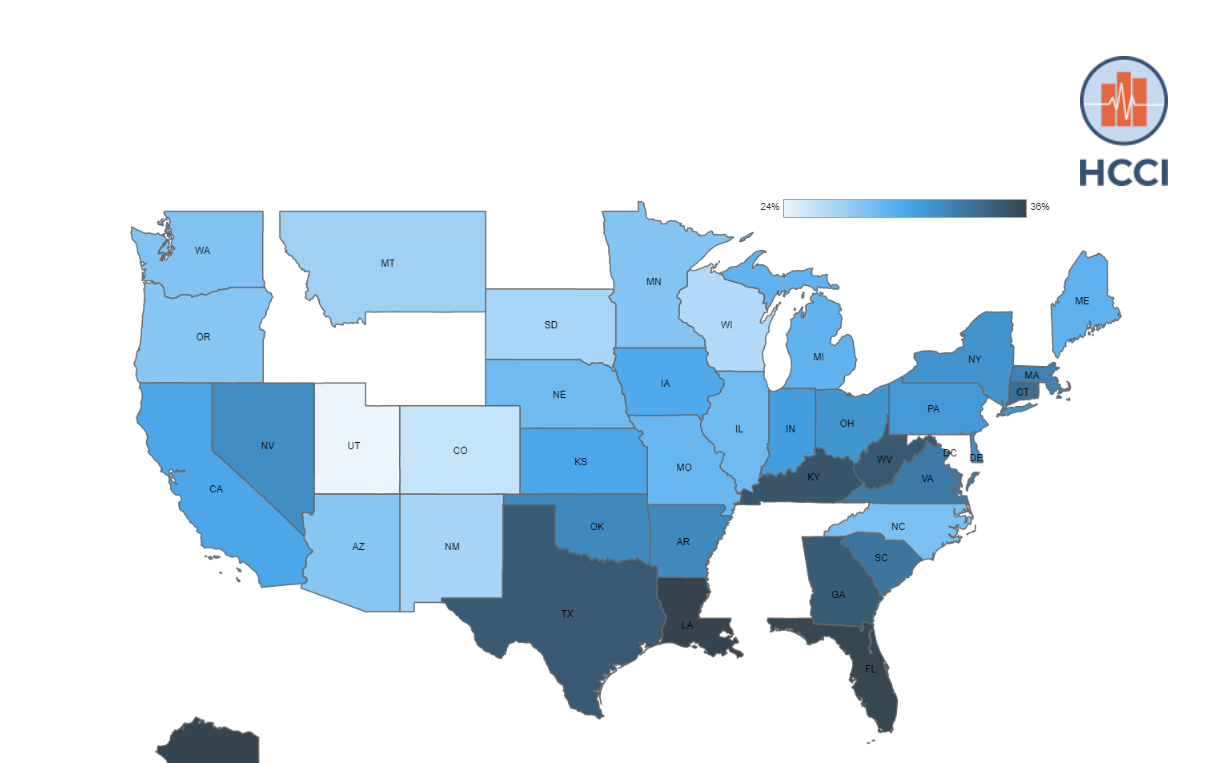 Read more: One-Third of Births Occurred by C-Section in ESI and Medicaid in 2020
Read more: One-Third of Births Occurred by C-Section in ESI and Medicaid in 2020Caesarean sections (c-sections) are often life-saving procedures that can prevent injury and death among birthing people and newborns. At the same time, when they are not medically necessary, c-sections may have higher risks to babies and birthing people than vaginal births. Monitoring rates of c-sections among birthing people is an important component of efforts to improve…
-
Average Payments for Childbirth Among the Commercially Insured and Fee-for-Service Medicaid
Read more: Average Payments for Childbirth Among the Commercially Insured and Fee-for-Service MedicaidIt is well-established that the rates hospitals and physicians are paid to provide health care services are significantly lower in Medicaid than in private health insurance. In this brief, we provide new data on this payment gap in the context of childbirth, an especially relevant area of care since Medicaid and ESI together cover the…
-
Effects of COVID-19 on Health Care Spending Were Concentrated in April-May 2020
 Read more: Effects of COVID-19 on Health Care Spending Were Concentrated in April-May 2020
Read more: Effects of COVID-19 on Health Care Spending Were Concentrated in April-May 2020The COVID-19 pandemic shaped health care spending and use over the past two years in numerous ways. We recently released our Health Care Cost and Utilization Report which provides data from the first year of the pandemic on health care use, spending, and prices across different types of services for approximately 55 million individuals enrolled…
-
The Price of Childbirth in the U.S. Tops $13,000 in 2020
Read more: The Price of Childbirth in the U.S. Tops $13,000 in 2020As HCCI has previously documented, the price of childbirth in the U.S. is higher than in many other countries. When prices are high, patients with health insurance pay directly through coinsurance (i.e., cost-sharing calculated as a percent of what their insurer pays for the service) and over time, as higher prices charged to insurers are…

